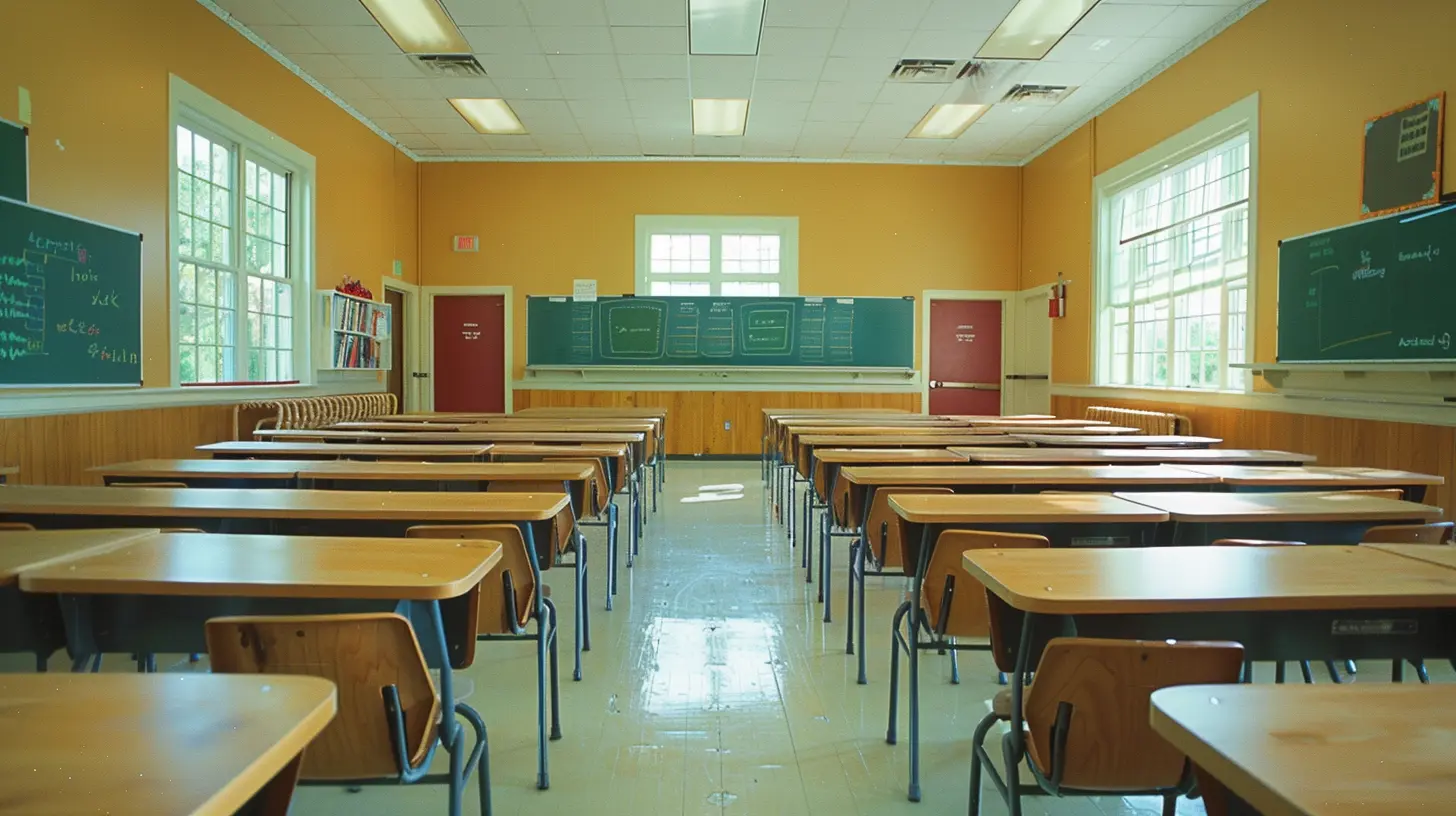The Role of Formative Assessment in Differentiated Classrooms
24 November 2025
Education is far from a one-size-fits-all approach. Every student learns differently, at their own pace and in their unique way. That’s where differentiated instruction comes in—to tailor teaching methods to meet each student’s needs. But how do teachers know if their strategies are working? The answer lies in formative assessment.
Formative assessment plays a crucial role in helping teachers understand where students stand in their learning journey. It provides real-time feedback, allowing educators to tweak their teaching approaches to maximize learning outcomes. Let’s dive deeper into how formative assessment helps in differentiated classrooms.

What is Formative Assessment?
At its core, formative assessment is an ongoing process where teachers evaluate students' understanding during learning, rather than waiting until the end of a unit. Unlike summative assessments (like final exams), which measure what students learned after instruction, formative assessments guide learning as it happens.Think of it like a GPS for education—formative assessment helps teachers and students identify where they are, where they need to go, and what route will get them there most efficiently.

Why is Formative Assessment Important in Differentiated Classrooms?
Differentiated classrooms aim to address diverse learning needs. Not all students grasp concepts at the same pace, and some might require alternative methods or additional support. Formative assessment helps in the following ways:- Personalized Learning: Teachers can modify lessons based on real-time feedback.
- Immediate Adjustments: If students struggle, interventions can happen right away instead of waiting weeks for test results.
- Encourages Student Engagement: Constant feedback keeps students actively involved in their learning journey.
- Reduces Anxiety: Frequent low-stakes assessments remove the pressure of high-stakes tests.
Now, let's explore how teachers can implement formative assessment effectively.

Effective Formative Assessment Strategies
To make the most of formative assessment, educators need the right tools and techniques. Here are some practical strategies:1. Exit Tickets
At the end of a lesson, students answer a quick question about what they learned. This provides teachers with immediate insight into student understanding. If many students struggle with the same concept, it’s a sign that adjustments are needed.2. Think-Pair-Share
This simple yet powerful strategy encourages students to think about a question, pair with a classmate to discuss their thoughts, and then share their responses with the whole class. It promotes collaboration and helps teachers assess comprehension in real-time.3. Quizzes (But Make Them Low-Stakes!)
Short, informal quizzes—whether on paper or using digital tools like Kahoot or Google Forms—allow teachers to gauge understanding without the stress of graded exams.4. Peer Feedback
Having students review each other's work encourages reflection and deeper understanding. Constructive criticism from peers can often make learning more relatable and less intimidating.5. Self-Assessments
Encouraging students to rate their understanding of a topic using a scale (e.g., "I completely understand" to "I need more help") empowers them to take charge of their learning while providing teachers with valuable insights.6. Hands-On Activities
Project-based learning, role-playing, and group discussions can reveal how well students apply concepts in real-world scenarios. Observing these activities gives teachers a clearer picture of student progress.7. One-on-One Conferences
Sometimes, a quick one-on-one check-in can uncover struggles students might not express in front of the class. A few minutes of personalized attention can go a long way.
How Formative Assessment Supports Differentiated Instruction
Differentiated classrooms thrive on flexibility, and formative assessment provides the necessary data to ensure instruction is adaptive and effective. Here’s how formative assessment aligns with different aspects of differentiation:1. Content Differentiation
Not all students need the same level of content. Formative assessment helps teachers determine which students need extra challenges and who might benefit from additional support.For instance, if a teacher sees that some students quickly grasp a math concept while others struggle, they can provide advanced exercises for the former and reinforcement activities for the latter.
2. Process Differentiation
Different students learn best through different methods—some prefer visual aids, while others thrive with hands-on activities. Formative assessment allows educators to identify which methods work best for each student and adjust accordingly.3. Product Differentiation
Students can showcase their understanding in various ways: essays, presentations, podcasts, or even art projects. If formative assessment reveals that writing tasks overwhelm certain students, alternative methods can be introduced to cater to their strengths.4. Learning Environment Differentiation
A flexible learning space is key in differentiated classrooms. Formative assessment can help teachers decide whether students need more independent work, group collaboration, or one-on-one support.Overcoming Challenges in Implementing Formative Assessment
While formative assessment is highly effective, implementing it comes with its own set of challenges. Here’s how teachers can tackle them:1. Time Constraints
With packed curriculums, finding time for continuous assessment can be tricky. The solution? Integrate assessments into everyday activities rather than treating them as separate tasks. For example, quick discussions or exit tickets take mere minutes but provide valuable insights.2. Student Reluctance
Some students hesitate to engage in assessments for fear of being wrong. To counter this, create a low-pressure environment where mistakes are seen as part of the learning process, not as failures.3. Data Overload
With frequent assessments, managing data can feel overwhelming. However, using digital tools like Google Classroom, Edmodo, or assessment apps can simplify record-keeping and analysis.4. Ensuring Fairness
Formative assessment should empower students, not discourage them. Providing diverse assessment methods—written, verbal, creative—ensures that every student's learning style is honored.
The Future of Formative Assessment in Differentiated Classrooms
Technology is revolutionizing formative assessment. Tools like AI-driven analytics, adaptive learning platforms, and real-time student response systems help teachers make data-driven decisions faster than ever.Additionally, the shift towards student-centered learning means formative assessment will continue to play a vital role in shaping personalized education experiences.
Final Thoughts
Formative assessment isn't just about testing—it’s about understanding, adapting, and improving. In differentiated classrooms, it serves as a guiding compass, helping educators ensure that every student receives the support they need to succeed.By consistently checking in on student progress, tweaking instructional methods, and embracing flexibility, teachers can create an environment where every learner thrives—not just the ones who immediately grasp the material.
So, the next time you're in a classroom, think of formative assessment as your secret weapon for unlocking every student's potential. After all, great teaching isn’t about delivering content—it’s about ensuring real learning happens.
all images in this post were generated using AI tools
Category:
Differentiated InstructionAuthor:

Olivia Chapman

